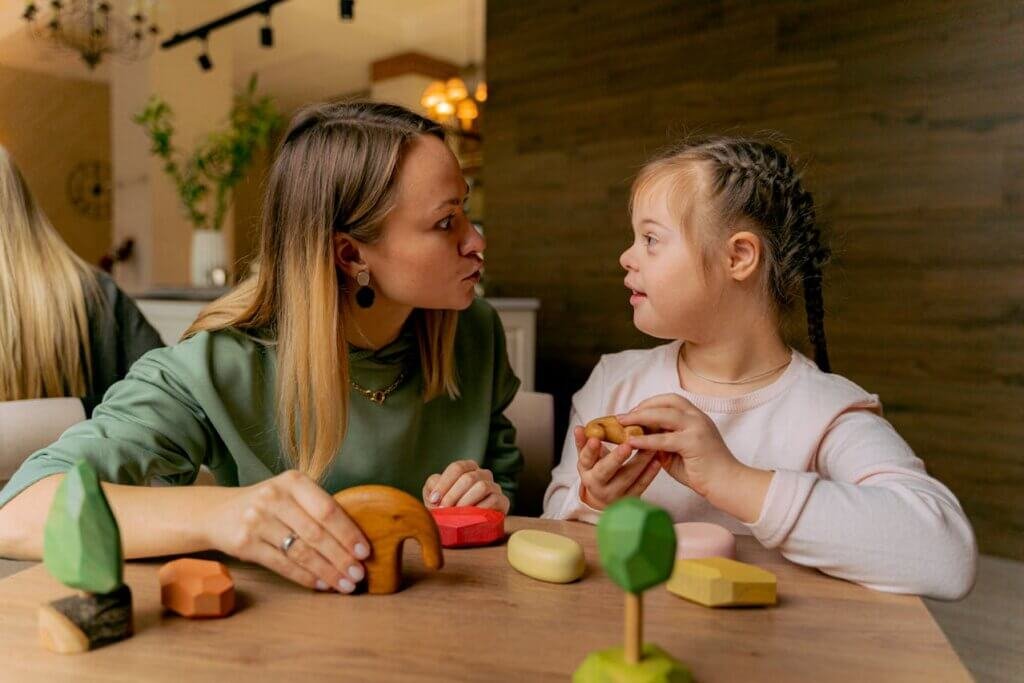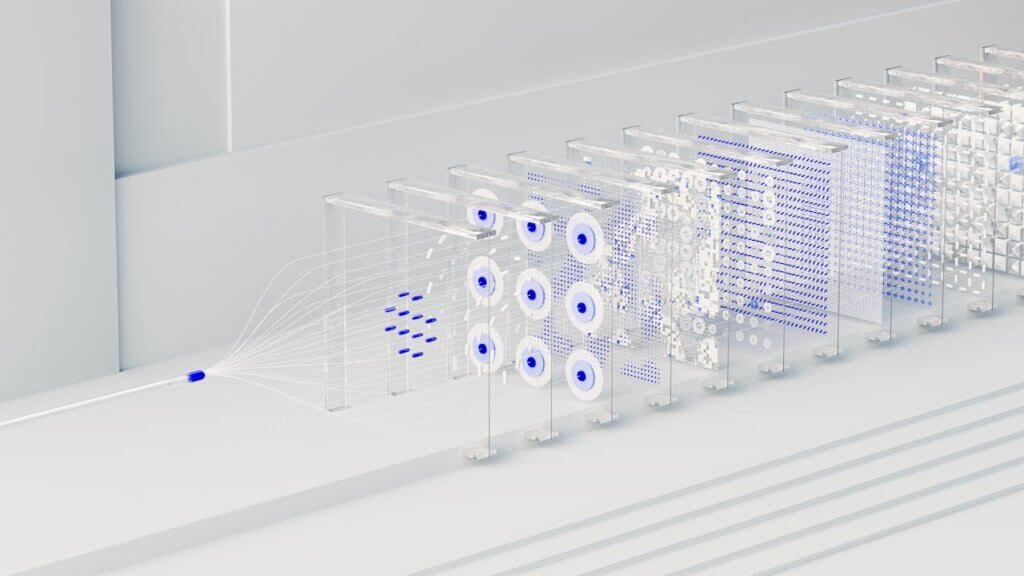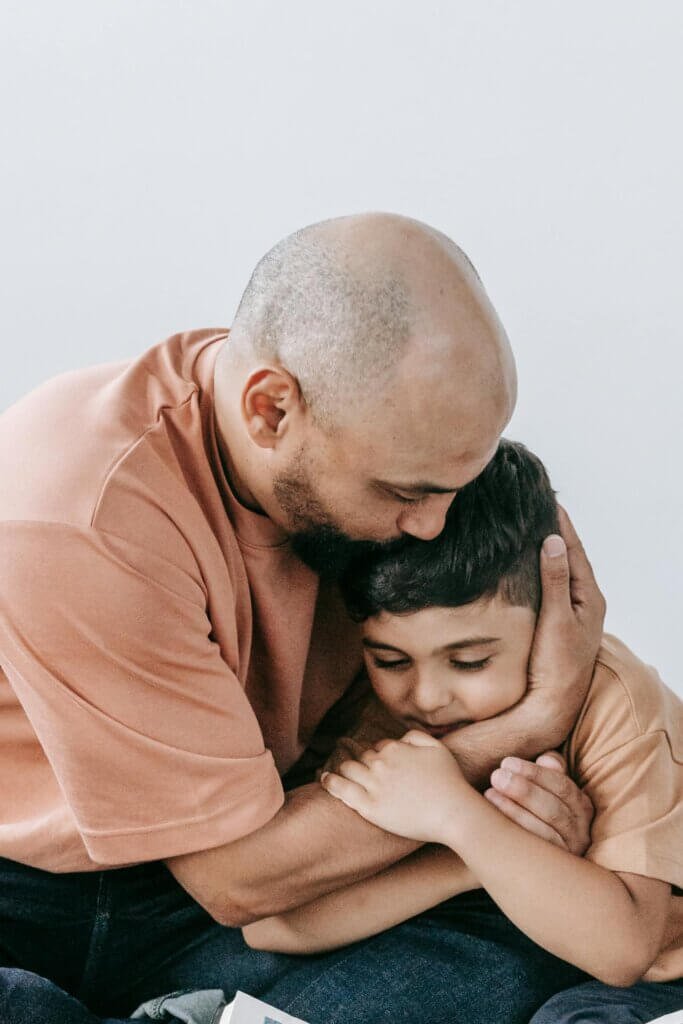
Nonverbal autism is a complex and often misunderstood condition that affects an individual’s ability to communicate through speech. While some individuals may have limited verbal abilities, others may not speak at all. According to a study, approximately 30% of autistic people are minimally verbal or nonverbal.
Communication is the cornerstone of human connection, but for autistic individuals, expressing thoughts and emotions can feel like an insurmountable challenge. Imagine living in a world where your thoughts are clear, but the words to express them remain trapped. This is the reality for many nonverbal autistic individuals, a condition that affects their ability to communicate through speech. However, communication is not limited to words. By understanding and decoding micro-expressions and body language, we can bridge the gap and create meaningful connections.
The Hidden Challenge: Motor Planning Issues in Nonverbal Autism

For many nonverbal autistic individuals, the challenge isn’t a lack of language—it’s the inability to translate their thoughts into spoken words due to motor planning difficulties.
One of the most profound misconceptions about nonverbal autism is that individuals lack the ability to think or understand language. This couldn’t be further from the truth. Research has shown that many nonverbal autistic individuals have intact language comprehension and cognitive abilities. The real barrier lies in apraxia or dyspraxia—motor planning issues that disrupt the connection between the brain’s language centers and the physical act of speaking.
The Brain-Mouth Disconnect
Motor planning, or praxis, is the brain’s ability to coordinate and execute movements. For nonverbal autistic individuals, this process is often disrupted. Imagine knowing exactly what you want to say but being unable to send the correct signals to your mouth to form the words. This is the daily reality for many nonverbal individuals.
Some nonverbal individuals understand complex instructions and can even type out their thoughts using a communication device. Yet, when they try to speak, their mouth doesn’t cooperate. This isn’t because they don’t want to speak—it’s because the motor pathways required for speech are impaired.
Research Supporting Motor Planning Challenges
Several studies have highlighted the role of motor planning difficulties in nonverbal autism:
- A 2013 study published in the journal Frontiers in Integrative Neuroscience found that children with autism often struggle with motor planning and coordination, which directly impacts their ability to speak. The researchers concluded that these motor difficulties are a significant factor in nonverbal autism. Read the study here. This research suggests that speech difficulties in autism may stem from motor planning challenges rather than intellectual limitations or social impairments.
- Dr. Elizabeth Torres, a leading researcher in autism and motor control, has extensively studied the connection between motor planning and communication in autism. Her work emphasizes that nonverbal individuals often have rich inner language but are unable to express it due to motor challenges. Learn More about her.
Breaking the Silence: Tools to Bridge the Gap
Understanding that the issue is motor-based rather than cognitive opens up new avenues for communication. Tools like Augmentative and Alternative Communication (AAC) devices, typing, or even eye-tracking technology can bypass the need for speech while still allowing individuals to express themselves.
It’s crucial to shift the narrative around nonverbal autism. These individuals are not “nonverbal” because they lack language—they are nonverbal because their bodies won’t cooperate with their minds. By recognizing this distinction, we can better support their communication needs and advocate for tools and therapies that address motor planning challenges, because the words are there, they’re just waiting for the right bridge to cross.
Nonverbal autism is not a lack of intelligence or desire to communicate. Instead, it’s a neurological difference that impacts how individuals process and express language. For example, Ezra, my 9-year-old autistic boy, has a vibrant inner world filled with thoughts and emotions. Yet, he struggles to convey them through words. Instead, he uses gestures, facial expressions, and body language to communicate his needs and feelings.
Understanding nonverbal autism requires us to look beyond speech and focus on alternative forms of communication. By doing so, we can unlock the potential for deeper connections and improved quality of life.
The Power of Nonverbal Communication

While words are often seen as the primary mode of communication, nonverbal cues can speak volumes, especially for those who cannot rely on speech. Nonverbal communication includes facial expressions, gestures, posture, and even tone of voice. For nonverbal autistic people, these cues often become their primary means of expression.
Take Ezra, for instance. When he is happy, he raises one hand in a unique gesture that conveys his happiness, and he smiles. When he’s overwhelmed, he covers his ears and retreats from the overstimulating environment. These behaviors are not random; they are deliberate attempts to communicate his emotional state.
According to a study by Albert Mehrabian, nonverbal communication accounts for up to 93% of human interaction. For individuals with nonverbal autism, understanding these cues is essential for building trust and fostering meaningful relationships.
Decoding Micro-Expressions in Nonverbal Autism

Micro-expressions are fleeting facial expressions that reveal genuine emotions, often lasting less than a second. These subtle cues can provide valuable insights into what someone is feeling, even if they cannot express it verbally.
In people with nonverbal autism, micro-expressions may be more pronounced or harder to detect due to differences in facial muscle control. For example, Ezra’s micro-expressions often include a slight twitch of his eyebrow when he’s curious or a quick frown when he’s frustrated.
To decode micro-expressions, caregivers and educators can:
- Observe facial expressions in different contexts.
- Look for patterns in emotional responses.
- Use tools like the Facial Action Coding System (FACS) to analyze facial movements.
By paying attention to these subtle cues, we can better understand and respond to the emotions of nonverbal people.
Reading Body Language: A Key to Connection

Body language is a universal form of communication, but for nonverbal people, it often becomes their primary means of expression. Common body language cues in nonverbal autism include hand flapping, rocking, pointing, and avoiding eye contact.
For Ezra, body language is his way of navigating the world. When he’s excited, he jumps up and down. When he’s anxious, he retreats to a corner. These behaviors are not just random movements; they are intentional attempts to communicate.
For many nonverbal individuals, the frustration of being unable to communicate can sometimes manifest as aggression. To learn more about this, read my blog post, Aggression in Nonverbal Autism: A Cry for Help, Not Defiance.
To interpret body language effectively, caregivers and educators should:
- Observe the context in which behaviors occur.
- Look for consistent patterns over time.
- Avoid making assumptions and instead ask open-ended questions.
By understanding body language, we can create a supportive environment that respects and responds to the needs of nonverbal individuals.
Tools and Techniques for Better Communication

Decoding nonverbal cues is only the first step—implementing effective communication strategies is where real progress happens. One of the most widely used tools is Augmentative and Alternative Communication (AAC) devices, which allow individuals to communicate using symbols, pictures, or text.
Other techniques include:
- Visual supports like social stories and visual schedules.
- Technology-driven solutions such as speech-generating apps.
- Consistent routines and clear expectations to reduce anxiety.
These tools not only enhance communication but also empower nonverbal autistic people to participate more fully in their communities.
The Role of Caregivers, Educators, and Therapists

For individuals like Ezra, the support system around them plays a pivotal role in unlocking their ability to communicate. Caregivers, educators, and therapists are often the first to notice and interpret nonverbal cues.
Training programs, such as those offered by the Hanen Centre, can equip professionals with the skills to support nonverbal communication. For Ezra, his therapists’ patience and willingness to listen without judgment have made all the difference.
Collaborative approaches, involving speech therapists, occupational therapists, and behavioral specialists, can also provide a holistic framework for communication development.
Challenges and Ethical Considerations

While decoding nonverbal cues can be transformative, it’s essential to approach this process with sensitivity and awareness. Misinterpreting signals can lead to frustration and misunderstandings. For example, assuming that hand flapping always indicates excitement may overlook other emotions like anxiety or overstimulation.
Respecting the autonomy and individuality of nonverbal individuals is paramount. Caregivers and educators must balance communication goals with the individual’s comfort and preferences.
Ethical considerations also arise when using technology or interventions. It’s crucial to ensure that these tools are used to empower, not control, the individual.
Success Stories: Breaking the Communication Barrier

Across the globe, countless stories highlight the transformative power of understanding nonverbal communication in autism. One such story is that of Carly Fleischmann, a nonverbal autistic woman who found her voice through typing. Her journey, documented in her book Carly’s Voice, has inspired millions.
For a heartwarming story of perseverance, read Thriving in Silence: A Nonverbal Boy’s Journey in a World Built for Words, which showcases how my son, Ezra, navigates communication barriers to thrive in a world built for words.
Such stories remind us that with patience, empathy, and the right tools, communication barriers can be overcome.
Future Directions: Research and Innovation

As our understanding of nonverbal autism deepens, new research and innovations are paving the way for even more effective communication strategies. Brain-computer interfaces, AI-driven tools, and personalized communication approaches hold immense promise.
For example, researchers at Stanford University are exploring how AI can interpret nonverbal cues in real-time, offering new possibilities for communication. Similarly, wearable devices that monitor physiological responses could provide insights into emotional states.
The future is bright, and with continued research and advocacy, we can create a world where every individual, regardless of their communication abilities, is heard and understood.
A World Beyond Words: Embracing Nonverbal Communication

Unlocking the world of nonverbal autism requires patience, empathy, and a willingness to listen without words. By decoding micro-expressions and body language, we can bridge the communication gap and create meaningful connections.
Ezra’s journey is a testament to the power of understanding and perseverance. While he may not speak, his actions, expressions, and gestures speak volumes. As caregivers, educators, and society, it’s our responsibility to listen and respond with compassion.
Let’s continue to learn, innovate, and advocate for a world where everyone has the opportunity to communicate and connect.
If you found this article insightful, consider sharing it with others to spread awareness about the importance of nonverbal communication in autism. Together, we can create a more inclusive and understanding world.
For further reading, check out these resources:
- Motor competency and social communication skills in preschool children with autism spectrum disorder
